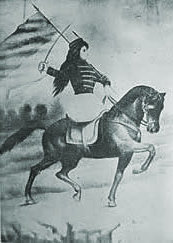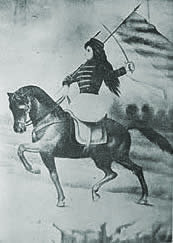
|
Women and Independence in Latin America An exploration of women's involvement in the Latin American Wars of Independence |

|

|
Women and Independence in Latin America An exploration of women's involvement in the Latin American Wars of Independence |

|
Click on the image below to see the full-size image
 Medals |
Other names: Marqués de Torre Tagle
Gender:Male
Ethnic origen: White
Events:
| 1779 | - | Lima | - | Not applicable | - | March 21, 1779 |
| 1790-1799 | - | Lima | - | Unknown | - | He was governor of Lima in the 1790s. |
| 1820 | - | Trujillo | - | Patriot | - | He pledged support for the independence cause and San Martín. |
| 1820 | - | Trujillo | - | Unknown | - | He was governor of Trujillo. |
| 1821? | - | Lima | - | Unknown | - | He returned to Lima around 1821. |
| 1822 | - | Trujillo | - | Patriot | - | San Martín made him a member of the Orden del Sol. |
| 1825 | - | Callao | - | Unknown | - | He died during the siege of Callao in 1825. |
Connections:
Bolívar opponentsBiography:
An aristocrat governor of Trujilllo born in 1779, who joined San Martín in 1820. He is described by Lynch as "politically devious", he worked against Bolívar and returned to the royalist cause. He died during the siege of Callao. (Lynch, xxiii)
He subscribed to Mercurio Peruano and Diario de Lima. (Clément, 129.) An updated version of this book shows that his uncle and a cousin were subscribers. (Clement, 1997, I, 84)
He married Mariana Echevarria de Santiago y Ulloa. They became great friends with San Martín and stood beside him when independence was proclaimed in Trujillo in 1820. They returned to Lima where they were staunch supporters of San Martín, opposed to Bolívar. San Martín made Torre Tagle a member of the Orden del Sol and Echevarria a member of the Banda Patriótica. When San Martín retired as protector they were persecuted. Echeverría sought asylum for Torre Tagle in the Convent de las Descalzas. They hid here for a time and a Chilean admiral, Blanco Encalada, told them he had a ship waiting for them in Callao. They left Lima at night with their two youngest sons and other family members (a group of 29 people). They arrived at Callao to find no boat existed and they were all taken prisoner. The Spanish general told the Marques he could return to Spain provided he recognised the Viceroy's authority and accepted the monarchy. This was unacceptable to the Torre Tagles and they remained imprisoned in a filthy shack. They suffered greatly in these conditions, Echevarria was the first to die, followed by the Marques (in 1825) and the rest of the party two weeks later. Two of their children, Josefa and María, survived. (García y García, 260-264)
A descendent of Viceroy Portocarrero (1636-1705)?
References:
Clément, Jean-Pierre (1979) Indices del Mercurio Peruano, 1790-1795
Clément, Jean-Pierre (1997) El Mercurio Peruano, 1790-1795 Vol I
Davies, Catherine, Brewster, Claire and Owen, Hilary (2006) South American Independence. Gender, Politics, Text
García y García, Elvira (1924) La mujer peruana a través de los siglos
Lynch, John (1986) The Spanish American Revolutions 1808-1826